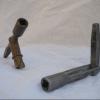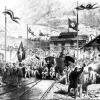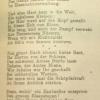Trans Europe Express
Trial run of the Trans Europe Express train
Trial run of the Trans Europ Express train, by Polygoon-Profilti (producer) / Netherlands Institute for Sound and Vision (curator), is licensed under Creative Commons - Attribution-Share Alike.
In 1957, the International Union of Railways (UIC) developed an international European railway service: the Trans Europe Express (TEE).
The TEE represented a new kind of international service that would allow competition with other developing means of transport, such as air and road traffic. The TEE offered first-class seats to business travelers who could comfortably travel to the main European cities. At the same time, it also introduced the Eurail Pass, which at the time was a first-class single ticket that would allow visitors from outside of Europe to travel on any train on the continent, but especially the TEE. At its height in 1974, the network connected 130 stations in Austria, Belgium, Denmark, France, Italy, Luxembourg, the Netherlands, Spain, and West Germany and comprised about forty-five trains.
The idea of the TEE stimulated new innovations that resolved differences in railway systems. In coordination with participating railway organizations, national governments, and the railway subcommittee of the United Nations Economic Committee for Europe, the UIC worked to unify time tables, tariffs, and material features, as well as the organization of services for passengers, not to mention a system that could operate on the four different systems of electric current in use in Europe.
The TEE itself experienced increasing competition from air traffic as well as domestic intercity railway services that offered both first- and second-class travel.
 Previous Story
Next Story
Previous Story
Next Story
How to cite this page
Suzanne Lommers, 'Trans Europe Express', Inventing Europe, http://www.inventingeurope.eu/story/trans-europe-express
Sources
- Kaiser, Wolfram, Johan Schot, and Dagmara Jajesniak-Quast. Making Rules for Europe:
Experts, International Organizations, Cartels. Basingstoke: Palgrave, forthcoming. - Schot, Johan, and Frank Schipper. “Experts and European Transport Integration, 1945-1958.” Journal of European Public Policy 18, no. 2 (March 1, 2011): 274–293.



















